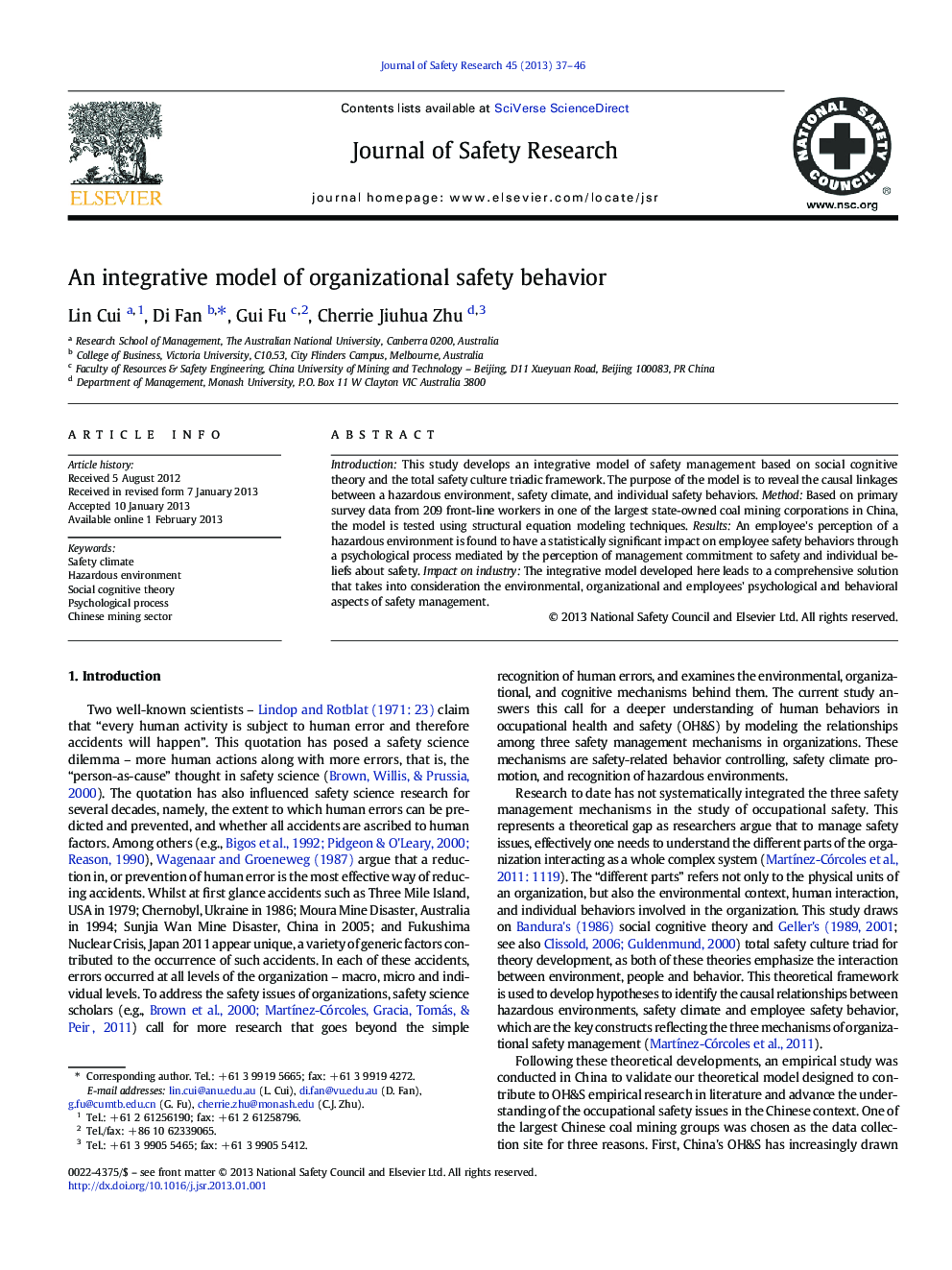| Article ID | Journal | Published Year | Pages | File Type |
|---|---|---|---|---|
| 587371 | Journal of Safety Research | 2013 | 10 Pages |
IntroductionThis study develops an integrative model of safety management based on social cognitive theory and the total safety culture triadic framework. The purpose of the model is to reveal the causal linkages between a hazardous environment, safety climate, and individual safety behaviors.MethodBased on primary survey data from 209 front-line workers in one of the largest state-owned coal mining corporations in China, the model is tested using structural equation modeling techniques.ResultsAn employee's perception of a hazardous environment is found to have a statistically significant impact on employee safety behaviors through a psychological process mediated by the perception of management commitment to safety and individual beliefs about safety.Impact on industryThe integrative model developed here leads to a comprehensive solution that takes into consideration the environmental, organizational and employees' psychological and behavioral aspects of safety management.
► The study develops an integrative model of organizational safety behavior ► The model is validated using survey data from Chinese mining sector ► Hazardous environment promotes management commitment to safety ► Perceived management commitment contributes to employee cognition of safety ► Employee cognition of safety leads to safety behaviors
